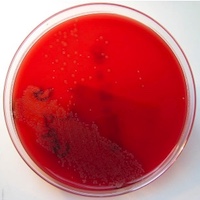Streptococcus dysgalactiae subspecies dysgalactiae as a cause of urinary tract infection in a diabetic woman: A case report and review of literature

Submitted: 12 June 2020
Accepted: 19 August 2020
Published: 30 November 2020
Accepted: 19 August 2020
Abstract Views: 1223
PDF: 366
Publisher's note
All claims expressed in this article are solely those of the authors and do not necessarily represent those of their affiliated organizations, or those of the publisher, the editors and the reviewers. Any product that may be evaluated in this article or claim that may be made by its manufacturer is not guaranteed or endorsed by the publisher.
All claims expressed in this article are solely those of the authors and do not necessarily represent those of their affiliated organizations, or those of the publisher, the editors and the reviewers. Any product that may be evaluated in this article or claim that may be made by its manufacturer is not guaranteed or endorsed by the publisher.

 https://doi.org/10.4081/mm.2020.9176
https://doi.org/10.4081/mm.2020.9176



